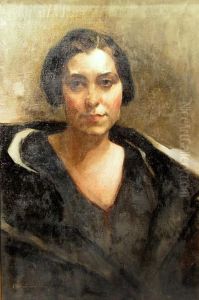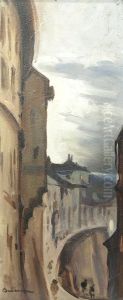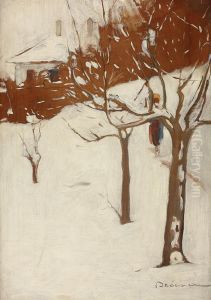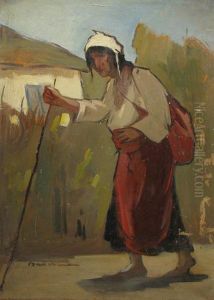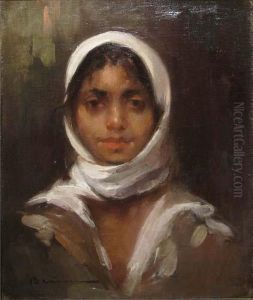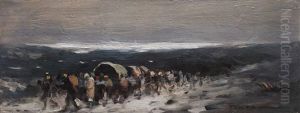Dumitru Braescu Paintings
Dumitru Brăescu was a Romanian painter, born on February 28, 1872, in Galați, Romania. He studied at the School of Fine Arts in Bucharest and continued his education in Munich and Paris. Brăescu was recognized for his contributions to landscape painting, following in the tradition of the Barbizon school, which emphasized the beauty and simplicity of rural life and nature.
After his studies abroad, Brăescu returned to Romania where he became an influential figure in the Romanian art scene. He was part of a wave of artists who brought Western European influences into Romanian art, while also seeking to capture the unique qualities of the Romanian countryside. His work is characterized by a gentle realism, with a focus on the harmonious interaction between light and color. Brăescu often painted scenes of the Romanian plains, forests, and peasant life, imbuing them with a sense of tranquility and timelessness.
During his career, Dumitru Brăescu exhibited his works in various shows, including the Official Salon in Bucharest and international exhibitions. His paintings were well received, and he garnered respect from both critics and the public. Beyond his contributions as an artist, he also played a significant role in the development of art education in Romania. He was a professor at the School of Fine Arts in Bucharest, where he influenced a new generation of Romanian artists.
Brăescu's legacy is preserved through his works, which can be found in the collections of major museums in Romania, including the National Museum of Art of Romania. His paintings are celebrated for their ability to capture the spirit of the Romanian landscape and for their contribution to the development of modern Romanian art. Dumitru Brăescu passed away on December 1, 1934, leaving behind a body of work that continues to inspire appreciation for the Romanian environment and its rural heritage.
